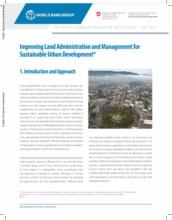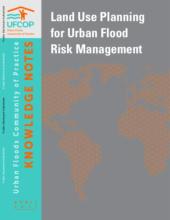Land Library
Welcome to the Land Portal Library. Explore our vast collection of open-access resources (over 74,000) including reports, journal articles, research papers, peer-reviewed publications, legal documents, videos and much more.
/ library resources
Showing items 1 through 9 of 105.This policy note assesses the performance of existing land administration and management (LAM) system in the Philippines in creating an environment for competitive cities.
This note offers policy makers and practitioners an overview of the key aspects of land use planning used to manage flood risks in cities across the world. It includes examples from developed and developing countries to provide insight into what has worked in different contexts.
The work of the Mekong Partnership for the Environment, and the work of
PACT, has been devoted to the role of EIA in achieving sustainable
development. Through the work of PACT and many other practitioners and
An analysis paper by Dustin Hoasa on the World Bank Group's lending practices, part 2 in Inclusive Development International (IDI)'s 'Outsourcing Development' series.
The West African coastal zone hosts
critical natural resources and habitats that provide
important ecosystem services. The area’s natural resources
play vital roles in the functioning of the shoreline,
Coastal erosion is a naturally occurring
process that is accelerated by human impacts. Artificial
stabilization of the shoreline, the deterioration of natural
formations, the construction of infrastructure, the
By European standards, Romania is a low urbanized country. There exists a rising trend towards suburbanization, however, that is not fully captured by Romania’s urban statistics.
The major role tropical forests play in
biodiversity and climate change has led the world to search
for effective ways to slow down deforestation. Community
forest management (CFM) is an example of the broader concept
This paper disentangles different
aspects of land fragmentation and its impact on the
efficiency of resource use. The paper uses information on
the incidence of crop shocks to assess whether fragmentation





